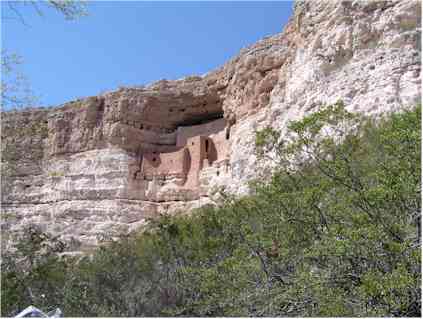
Cliff Dwellings and Pueblos
Early in the 12th century, groups of people, whom the archaeologists have named Sinagua, moved into the Verde Valley from the north. They raised corn, beans, squash, and cotton. They planted their fields near sources of water and dug irrigation ditches to bring the water to their crops. They flourished in this area until about AD 1400 when they mysteriously disappeared.

One such Sinagua village is this cliff dwelling called Montezuma's Castle. Its name came from early historians who mistakenly believed that it was built by Aztecs for their king Montezuma.
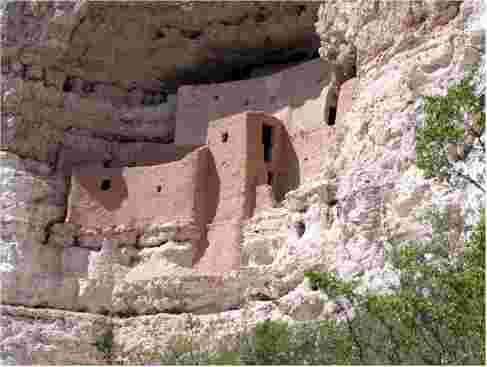
This 20 room dwelling housed about 35 people. There was another, larger structure a few hundred yards down the valley that housed about 100 people. It was almost totally destroyed by fire sometime after both structures were abandoned about AD 1450.
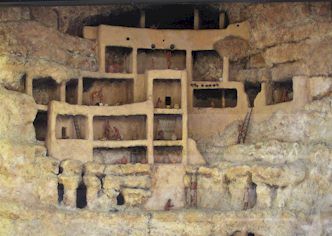
This cut-away model shows what the inside looked like. The rooms were accessed from above by ladder. Longer ladders provided access to the structure from the valley floor.
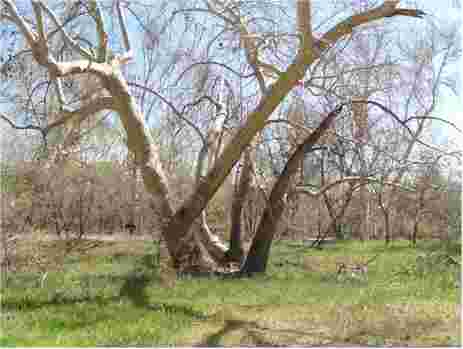
These sycamore trees grow along Beaver Creek in the valley floor just below the village. The trees were used as support beams in the construction of the structure. Most of those beams are still in place and still strong.
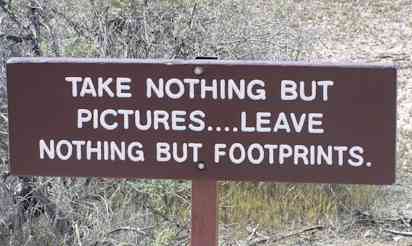
This sign appears near the cliff dwelling. I totally agree with the suggestion and followed their advice carefully.

A few miles down he valley is another Sinagua village called Tuzigoot. (This is Apache for "crooked Waters".) It crowns a long ridge that rises about 120 feet above the Verde Valley. This pueblo had 77 ground floor rooms and was two stories high in places. It housed as many as 200 people. It was built about the same time as Montezuma's Castle, about AD 1200 and was mysteriously abandoned about 1450. This structure was not as well preserved as Montezuma's Castle.